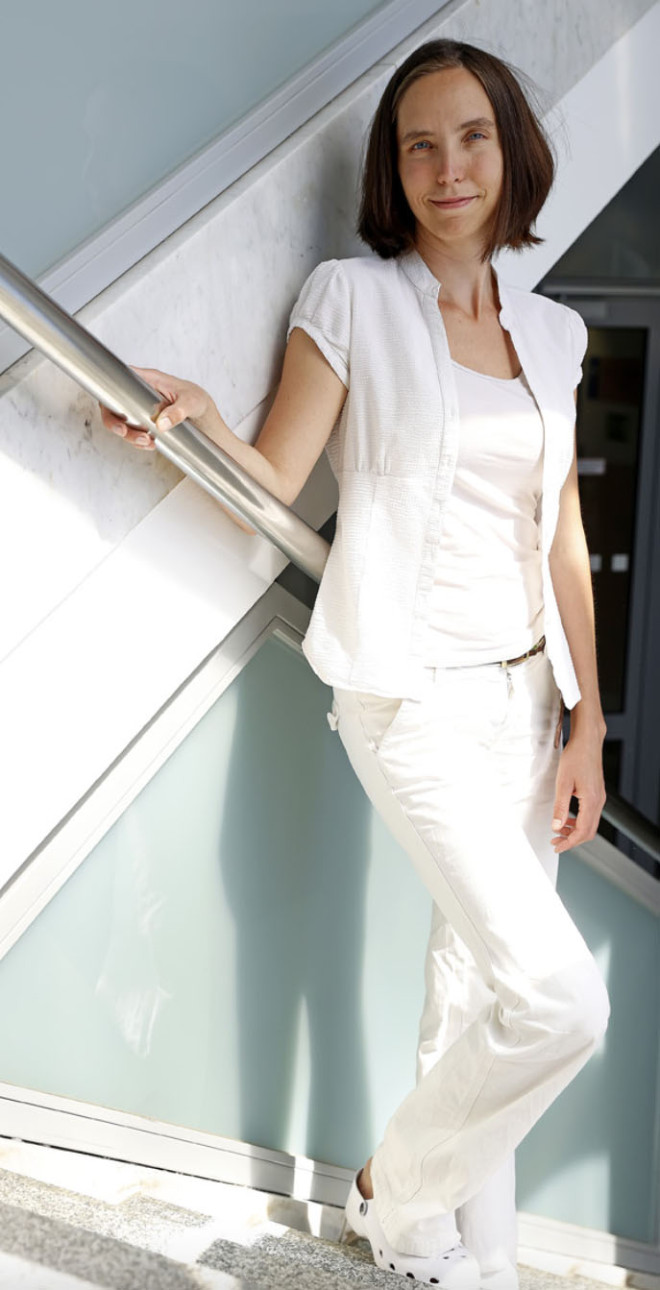Eliška Popelová, MD, PhD, works in the paediatric section of the Department of Imaging Methods at the Second Faculty of Medicine, Charles University in Prague and Motol University Hospital. She deals with the problem of abused and neglected children from the radiology point of view. She participated in the first Czech guidelines in this field Let's Stand on the Side of Children. Recommendations for the Use of Imaging Methods in Suspected Child Abuse, which were approved in March 2021 by the Committee of the Radiological Society of the Czech Academy of Sciences. In 2024 she defended her dissertation on Radiological examination algorithm in suspected child abuse.
How did you get interested in child trauma and imaging, and what inspired your dissertation topic?
In 2013, I first encountered an X-ray of an infant in whom doctors suspected abuse. While studying the international literature, I found that there was significant room for improvement in this field, particularly in standardising procedures and bringing more objectivity to the evaluation of findings. As I became more familiar with the scope of the problem, linking it to my doctoral studies seemed like a logical step that would allow me to pursue the topic in greater depth. Although my thesis focuses on all children regardless of age, it primarily concentrates on children under the age of two, who are most vulnerable to abuse and have no opportunity to report it themselves.
 The cooperation between doctors, the Authority for Social and Legal Protection of Children (OSPOD), police, and courts is crucial for identifying abused children. What improvements have been made in this area?
The cooperation between doctors, the Authority for Social and Legal Protection of Children (OSPOD), police, and courts is crucial for identifying abused children. What improvements have been made in this area?
I see the main improvements in two key aspects. The first is the chapter on legal aspects in the publication Stand Up for Children, which we wrote in cooperation with law specialist Šárka Speciánová. This chapter clearly explains, using examples, the legal obligations of health professionals in the field of child protection. During discussions after lectures, I notice that doctors' questions most often turn to legal aspects, such as when it is necessary to contact the OSPOD and when to contact the Police of the Czech Republic. Doctors need more certainty in these situations.
The second aspect is that these Recommendations reflect evidence-based medicine. To a large extent, doctors do not have to rely on their personal feelings about the parents of their child patients but can follow best practices based on statistical data. While the impression of the parents is important, the Recommendations should allow physicians to replace the mindset of “The parents don't look suspicious, so they are probably telling the truth, even if it doesn't sound likely” with the decision of “We always investigate to rule out that the child has been exposed to violence in this type of injury.” This is how doctors should communicate this to parents themselves – in short, these are standardised procedures, not the personal decision of an individual doctor.
However, much needs to be improved. For example, I see the lack of a link between the bodies you mentioned that are supposed to ensure the protection of children as a major problem, as well as the absence of recommended guidelines for the protection of children.
A series of examinations are needed to prove hidden bone injuries in children, and of course, not always is the injury eventually proven. Do you also think about making sure that innocent parents are not unnecessarily traumatised by false suspicions?
That is an excellent question, and I think there is still a lot of work to be done here as well. Radiological examinations in young children, if used correctly, must be seen as screening examinations, and therefore most of these examinations will have a negative result. Parents should never feel blame or contempt when communicating with doctors. It is in the interest of health professionals to protect the child, and if abuse is one of the possibilities that the condition of a child patient points to, this possibility must be investigated. However, it should be treated in the same way as other possible diagnoses, such as metabolic skeletal disease. It is essential to separate the roles of doctors, police officers, and judges. Doctors neither accuse nor judge. They do not point to a possible culprit; their focus is on the child patient and his or her safety. This should be evident from the communication with the parents. However, this is undoubtedly not an easy task for doctors, and it is essential that educational programmes are set up which include not only diagnosis but also communication.
You like to run; runners experience changes in their bones and joints as a result of running, such as strengthening but also wear and tear. Do you try to prevent these risks with your knowledge?
Now that's a question that made me laugh! Unfortunately for me, the shoemaker's children go barefoot. I recently suffered a fatigue fracture of my tibia as a result of running, so I guess I'm not the best person to ask. For future reference, I know that in addition to good shoes and suitable terrain, I also need to watch the frequency and intensity of my training and rest...
